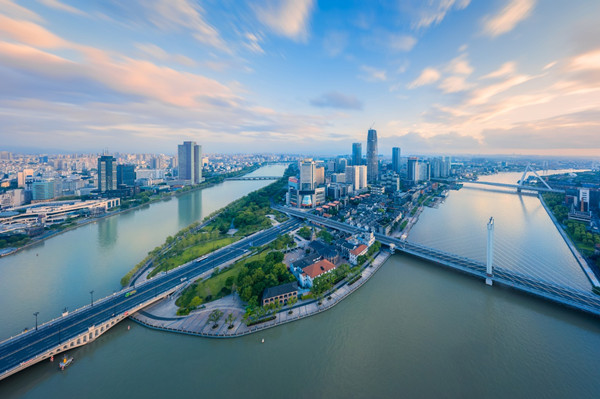Ningbo sees GDP rise 2.9% in H1

A view of Ningbo, East China's Zhejiang province. [Photo/VCG]
Ningbo in East China's Zhejiang province saw its gross domestic product grow 2.9 percent year-on-year in the first half of 2022 to hit 726.03 billion yuan ($111.7 billion), according to local statistics authorities.
The added value of the city's primary, secondary, and tertiary industries reached 15.66 billion yuan, 354.43 billion yuan, and 355.94 billion yuan, a year-on-year growth of 4 percent, 3.8 percent, and 2 percent respectively.
Its agriculture, forestry, animal husbandry, and fishery industries registered a year-on-year increase of 4.1 percent to 16.54 billion yuan during the six-month period.
The added value of industrial enterprises above designated size in Ningbo expanded 5 percent year-on-year to 268.42 billion yuan. Their profits totaled 73.41 billion yuan, shrinking by 20.5 percent from a year earlier.
Twenty-two out of 35 major industries in the city reported positive growth in added value. Stable growth was seen in its service sector, which recorded a year-on-year increase of 2 percent.
From January to June, the city's investment in fixed assets achieved a year-on-year growth of 10.3 percent.
Its foreign trade volume rose by 11.9 percent to 632.25 billion yuan during the period. Specifically, its exports increased by 14.1 percent to 408.5 billion yuan, accounting for 3.67 percent of the nation's total and 0.03 percentage points higher than the same period last year. Over the same period, imports and exports of local private enterprises were valued at 448.17 billion yuan, making up 70.9 percent of the city's total.
Ningbo also posted a strong recovery in consumption in the past six months. The city's retail sales of social consumption goods during this period amounted to 221.22 billion yuan, a jump of 2.4 percent year-on-year.
The city's fiscal revenue dipped 0.9 percent to 204.73 billion yuan.
Income levels also improved. The city's overall per capita disposable income in the first half of this year increased by 5 percent to 38,254 yuan. Per capita disposable income of urban residents rose to 43,239 yuan, while the figure for rural residents was 25,292 yuan.

